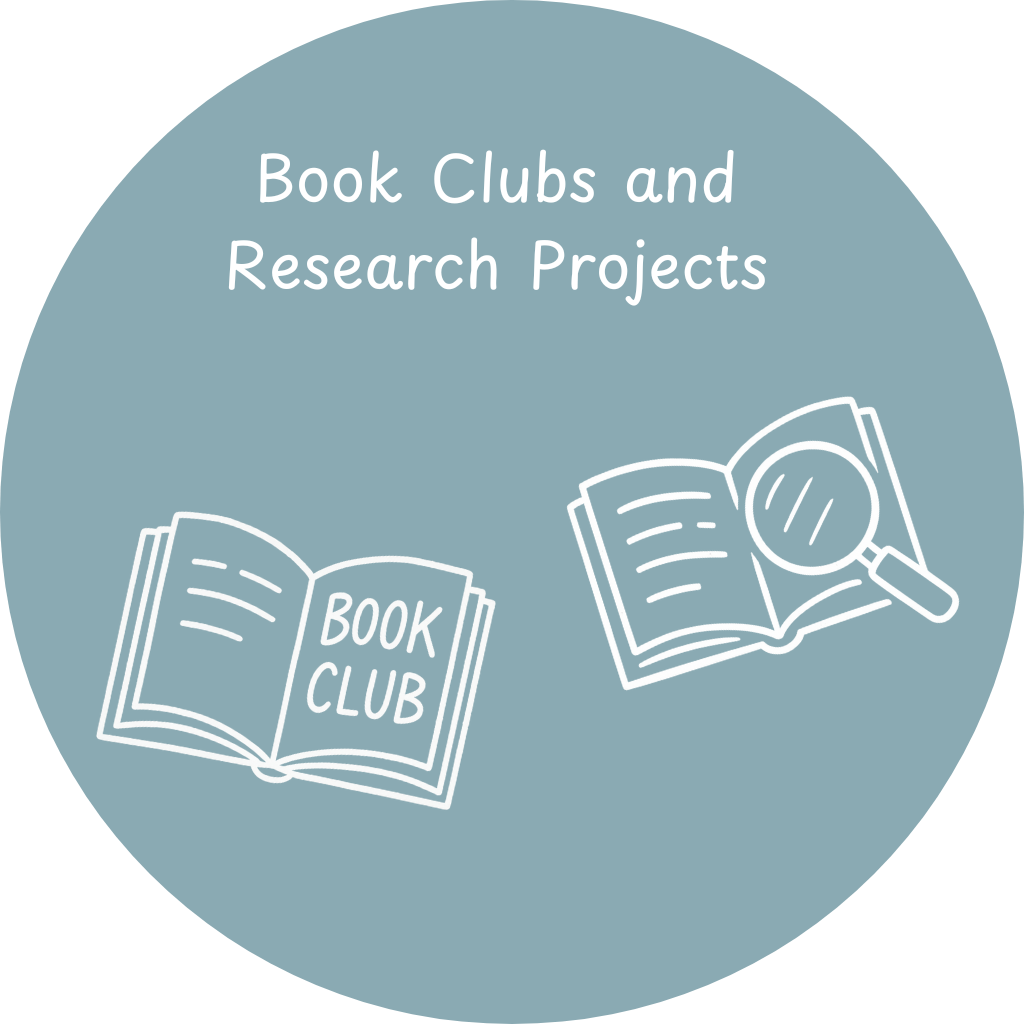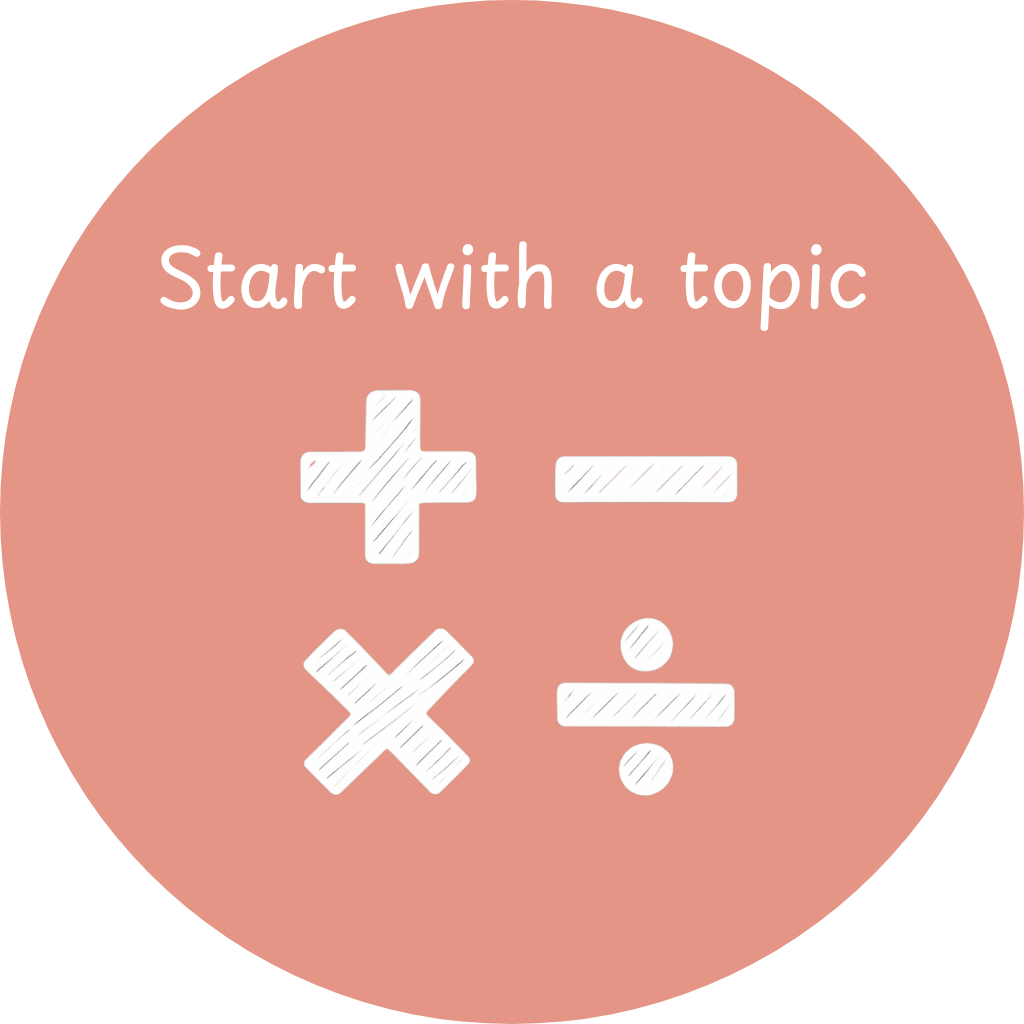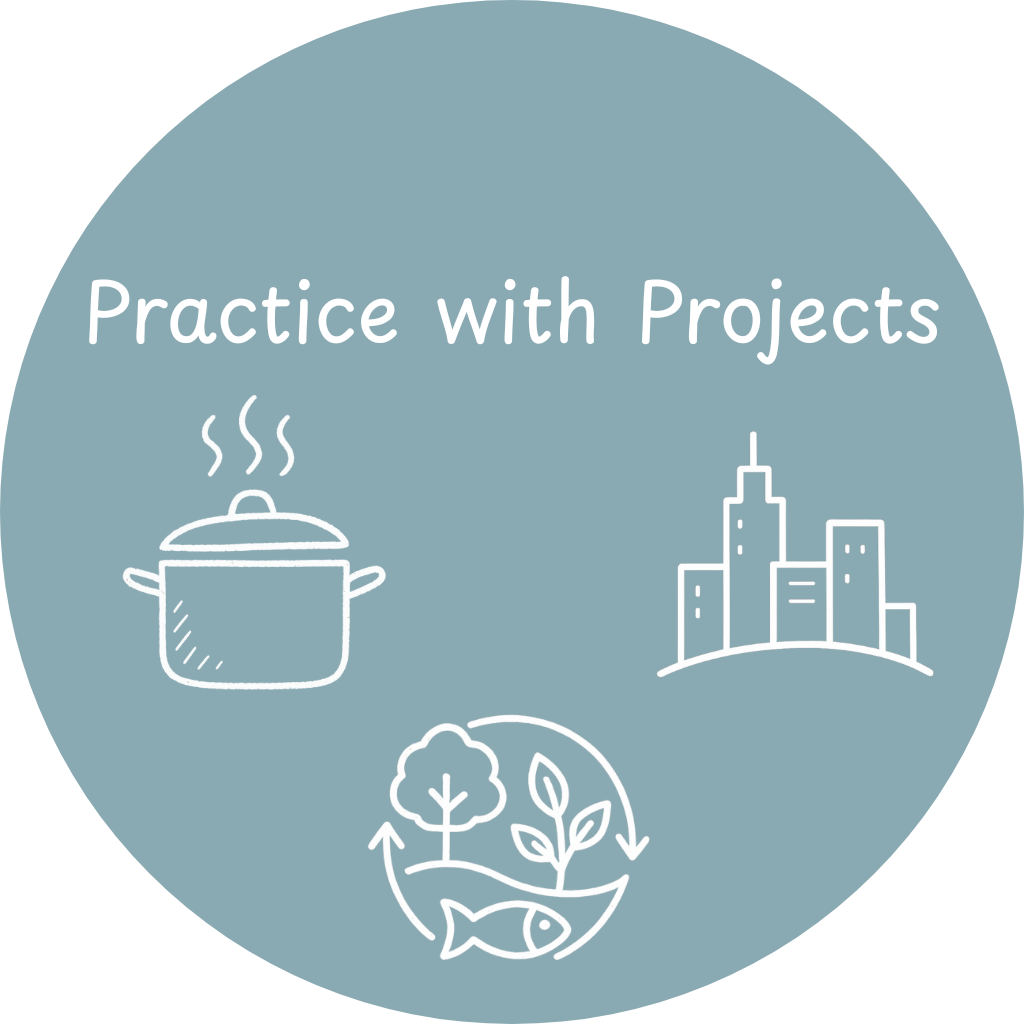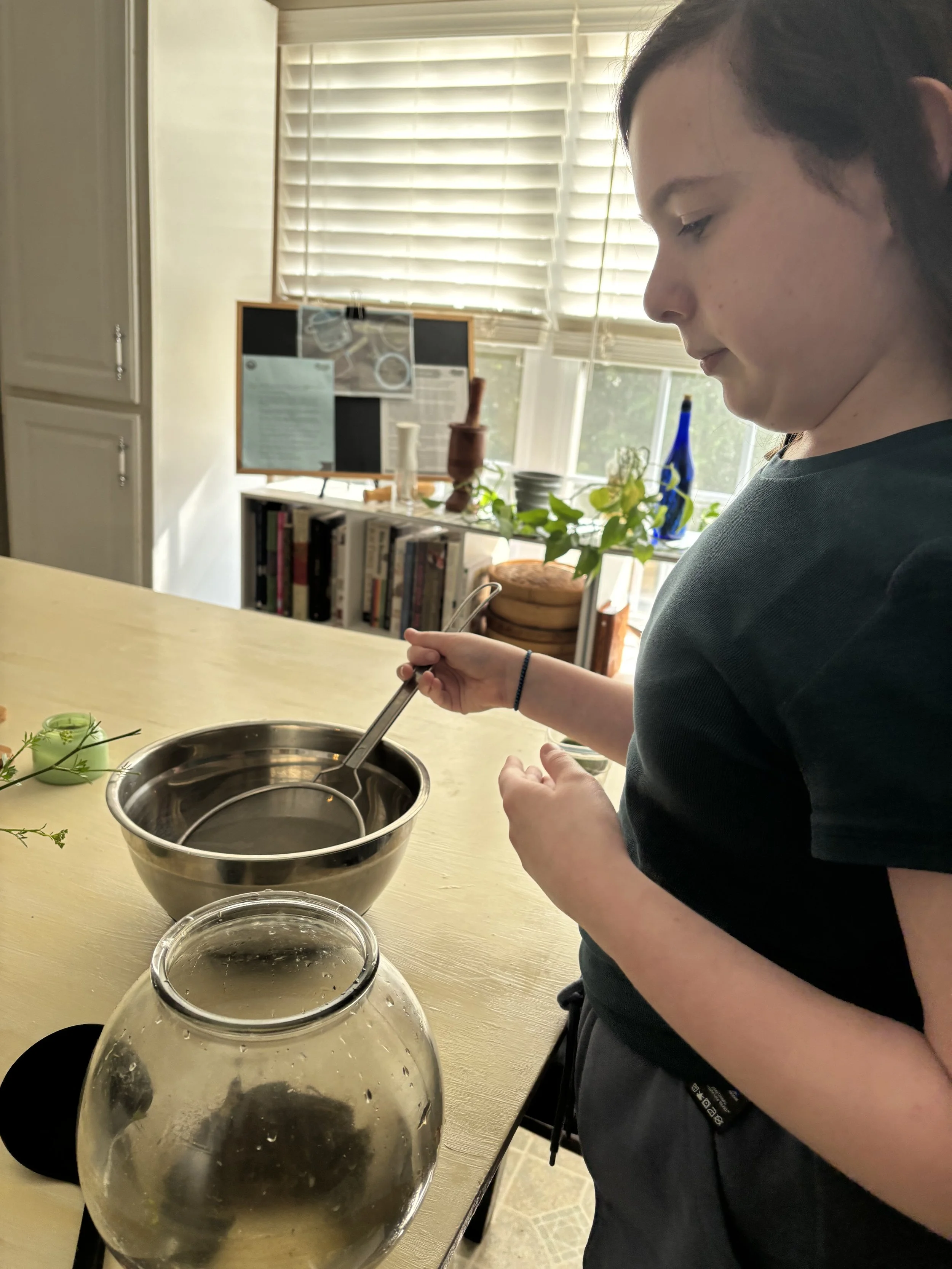Our Approach
We know true learning only begins when kids feel a sense of safety. We focus on building a school culture of belonging by modeling and teaching the skills kids need to truly see, value and support themselves and one another.
Daily Restorative Circles, listening to understand and reach middle ground, teaching how to respond rather than react and how to be clear and kind are examples of how we teach kids to celebrate differences, lead with compassion and treat themselves with kindness.
Here your child is the driver of their learning in partnership with teachers and classmates. Making choices empowers your child to build trust in themselves, helping them grow in self-awareness, understanding who they are and how they want to express themselves.
This unfolds within a supportive community that helps kids understand the why behind their choices and how each decision contributes to the unique life they are building.
We believe every child is inherently powerful; capable of making a real impact right now. Our learning is rooted in community-engaged projects that tackle essential life questions like:
‘Can one person truly make a difference?’
‘What does fairness and justice look like in practice?’
This approach makes all academic learning deeply meaningful and connected causing kids to internalize diverse perspectives and lifelong habits of curiosity and inquisition.
Lessons from the Reggio Emilia Approach
Practicality Beyond Early Childhood Education:
While the Reggio Emilia Approach is conventionally associated with children ranging from infant through age 6, we believe many of its principles are applicable well beyond this early stage of a child’s educational journey. Harvard’s Project Zero supports and expands on this idea — that education is most impactful when it is purposeful, social, representational, empowering and emotional.
The core principles we have adopted:
Children as capable learners
Students are viewed as strong, competent and full of potential. They’re active constructors of knowledge, not passive recipients.
Emergent Curriculum
Learning is child-led and project-based. Teachers observe students’ interests and design curriculum around those interests.
Documentation of Learning
Teachers document student progress (e.g., digital portfolios, projects, blog) to reflect learning and inform next steps, encouraging reflection and revisiting ideas.
The Hundred Languages of Children
Children express themselves in many different ways: art, movement, play, speech, music, etc. All are equally valued forms of learning and expression.
Collaboration and Relationships
Emphasis is placed on group work, cooperation, and dialogue, both among peers and between students and adults.
Reading and Writing at Bridges Academy
Developing strong literary skills through authentic engagement:
We believe that engagement is at the heart of all learning and particularly so for tasks like reading and writing that often require time, patience and practice. Inspired by the practices of Matt Glover, we at Bridges Academy have daily Writer’s Workshop time where we introduce Mentor Texts to nurture children as thoughtful, self-directed readers and writers.
In our classrooms, students are introduced to a wide range of writing genres and possibilities through carefully selected mentor texts. These texts serve as models that children can analyze, discuss and emulate, allowing them to see themselves as authors with a genuine voice and audience. Children choose their books and writing projects based on their interests, identities, and the impact they want to have on the world.
What does this look like in the classroom?
Daily Writer’s Workshop Time: Students write every day in dedicated blocks of time, providing the consistency needed to build fluency, stamina, and joy in writing.
Mini-Units of Study: Short teaching units help students explore big questions like:
How do writers find ideas?
What kinds of writing genres exist?
How do authors use punctuation to craft tone and rhythm?
How can illustrations convey meaning alongside text?
What can we learn from mentor texts or peer feedback?
Student Choice and Purpose:
Children select from genres such as science fiction, mystery, songs, poetry, photo essays, memoirs, and graphic novels, empowering them to align their writing with how they see themselves and what they care about.
Conferences and Feedback:
Teachers meet one-on-one with students to set goals, solve writing problems, and help deepen their work. Students reflect on their progress and develop as independent learners.
Book Clubs and Research Projects:
Reading is deeply integrated with writing through book clubs, blogs, and inquiry-based research—helping students see literacy as a tool for both personal and social expression.
Student Projects in Action
Laurence (5th grade), inspired by his love of manga, read widely to analyze author techniques, created storyboards, and experimented with illustration and animation!
Ollie (4th grade), fascinated by aviation, used a simulator and read extensively about pilots, airports, and flight scenarios. He created a photo essay to share his learning and later started a blog!
Charlotte (8th grade), aspiring to be a pet caregiver, researched volunteer opportunities, completed a training course, and created a flyer with illustrations and persuasive writing to advertise her services.
We begin with the NC Standard Math Goals and then explore them through three pathways:
Pairing new math topics with engaging problems for critical thinking:
This sparks a discovery process where kids build their own solutions, fostering ownership and competence.
We share our varied solutions in group discussion which supports kids to see that there are many ways to solve a problem as well as notice their own unique approach.
This also allows teachers to understand the thinking process and assess the math competence of each child and differentiate math challenges that fits each learner.
Using technology to fine-tune math goals:
We use IXL to provide a pathway to allow kids to explore math goals at their own pace using individual practice, group practice through a collaborative IXL tool called Group Jam and math-based games.
Kids can use the IXL math diagnostic tool as a way to control and track their own math progress giving them ownership over their progress. Teachers also use this diagnostic tool to support learning and assess growth.
Putting it all together with project-based learning:
Kids consistently experience the practical applications of math, and our teachers support making these connections visible. Through these hands-on experiences, math isn't just a subject; it's an essential tool for understanding and shaping their world!
Last year offered many great examples:
Cooking: Our weekly cooking sessions naturally integrated measurement, fractions, and ratios, making math skills a tangible part of creating.
Future City Project: Kids applied concepts of scale to produce their city models, seeing geometry and proportion come to life.
Ecosystem Studies: Water testing and result calculations in their ecosystem studies provided real-world data analysis and interpretation.
Our Powerful Approach to Math
Tying it all Together: Project Based Learning
Our Distinctive Approach to Project-Based Learning (PBL):
At Bridges Academy, our project-based learning isn't about fitting kids into pre-designed, generic projects. Instead, our teachers act as thinking partners and dedicated researchers of children. We present possibilities and introduce experiences and observe to deeply understand each child's individual interests, unique questions, budding curiosities, and emerging patterns of thinking.
Fostering genuine interest through observation and collaboration:
Intrinsic motivation as a cornerstone of our philosophy ensures that projects come from the children's authentic interests, making the learning inherently engaging and purposeful for them. It's this deep personalization, rather than the mere format of a project, that truly sets Bridges Academy's project-based learning apart and fuels genuine enthusiasm and deeper learning. The NC Standard Curriculums for Science, Social Studies, Reading, Writing, and Math serve as guides for our observations. By understanding these goals, we can organically link the learning we witness in our students to key academic objectives.
An example of how learning springs to life at Bridges Academy: the tadpole project
At Bridges Academy, we believe learning is most powerful when it emerges from a child's natural curiosity. Here’s a glimpse into how a simple discovery transformed into a deep, engaging learning journey that integrated goals from a wide variety of areas of the NC Curriculum.
1. Sparking Curiosity: The Discovery While playing outside, our kids discovered tadpoles in a shallow pond. Day after day, their fascination grew as they kept returning to observe them.
2. Noticing & Researching: Teachers as Guides Our teachers, acting as thinking partners and researchers of kids, observed this sustained interest. They began documenting the children's spontaneous questions: "How long until they're frogs?", "What do tadpoles eat?", "Is the water healthy?", "Will they die if the water gets too hot?"
3. Cultivating Deeper Learning: Collaborative Design Reviewing these authentic questions, our teachers collaborated to extend the children's interest. They saw an opportunity to weave in broader concepts about how the world works, and even how kids could make an impact. We also identified how this natural curiosity aligned perfectly with our NC curriculum's ecosystem goals.
4. Kid-Led Exploration & Real-World Connections We asked the kids if they'd like to create a small ecosystem for a few tadpoles for closer observation. Their enthusiasm was immediate, leading to spontaneous research on how to build a happy tadpole habitat.
This also sparked a profound discussion about the ethics of taking animals from their natural environment. This ongoing conversation inspired a field trip to a local safari, where kids could see animals in various habitats. Back at school, one student launched a writer's workshop project, logging the tadpoles' growth. Another researched tadpole survival rates in nature versus captivity, becoming a leader in the "fairness" debate. A child whose dad worked with wastewater suggested testing the pond water. With their teacher, they connected with his dad, who provided a water test kit, making the scientific inquiry even more authentic.
The Bridges Academy Way
What you’ve just seen is a snapshot, but it illustrates how Bridges Academy's project-based learning differs from others. It's about empowering children to ask, explore, and discover with teachers guiding them to make their learning visible and connect it to meaningful, real-world issues. The projects truly become their own, fostering genuine curiosity, critical thinking and a sense of contribution to their community.


















